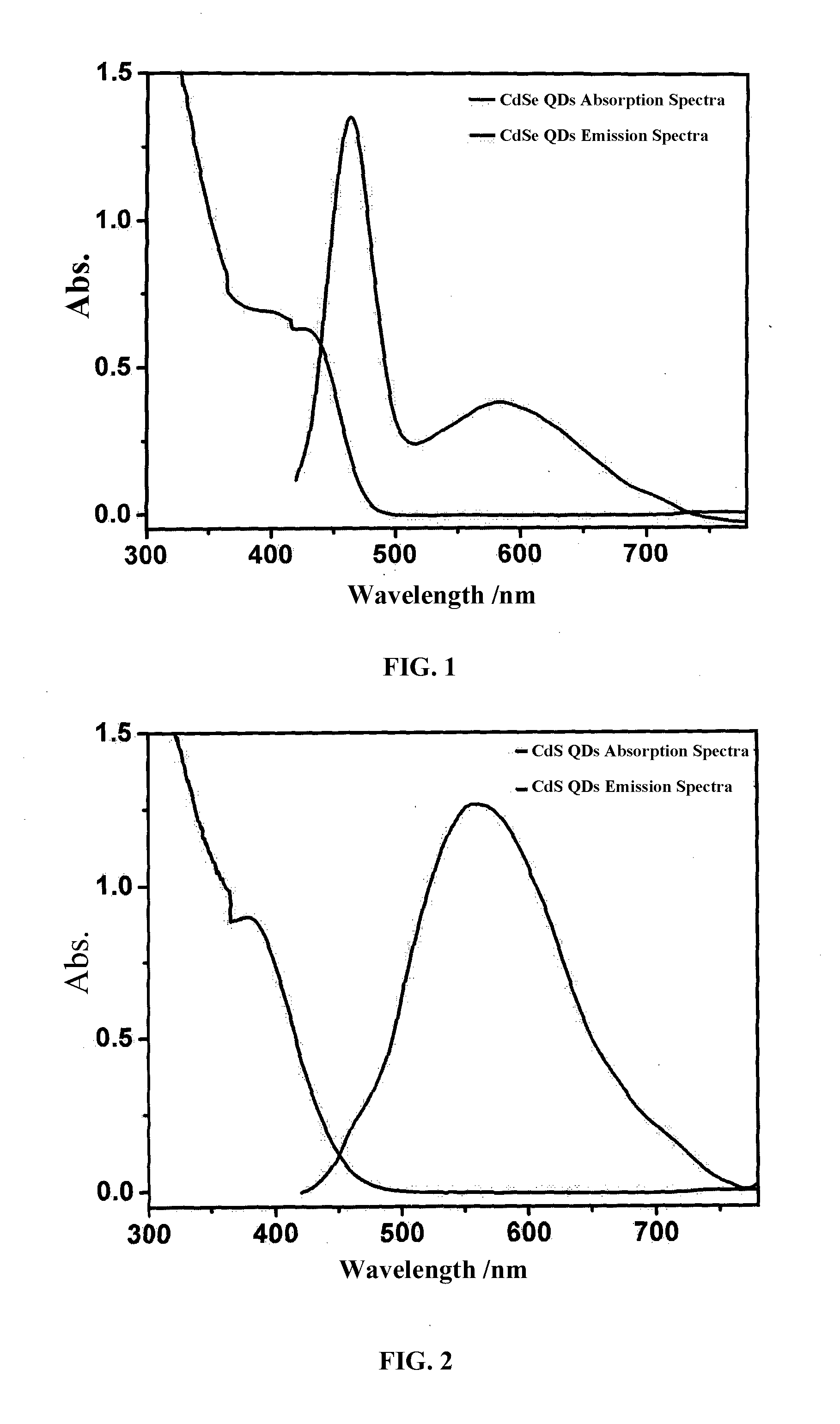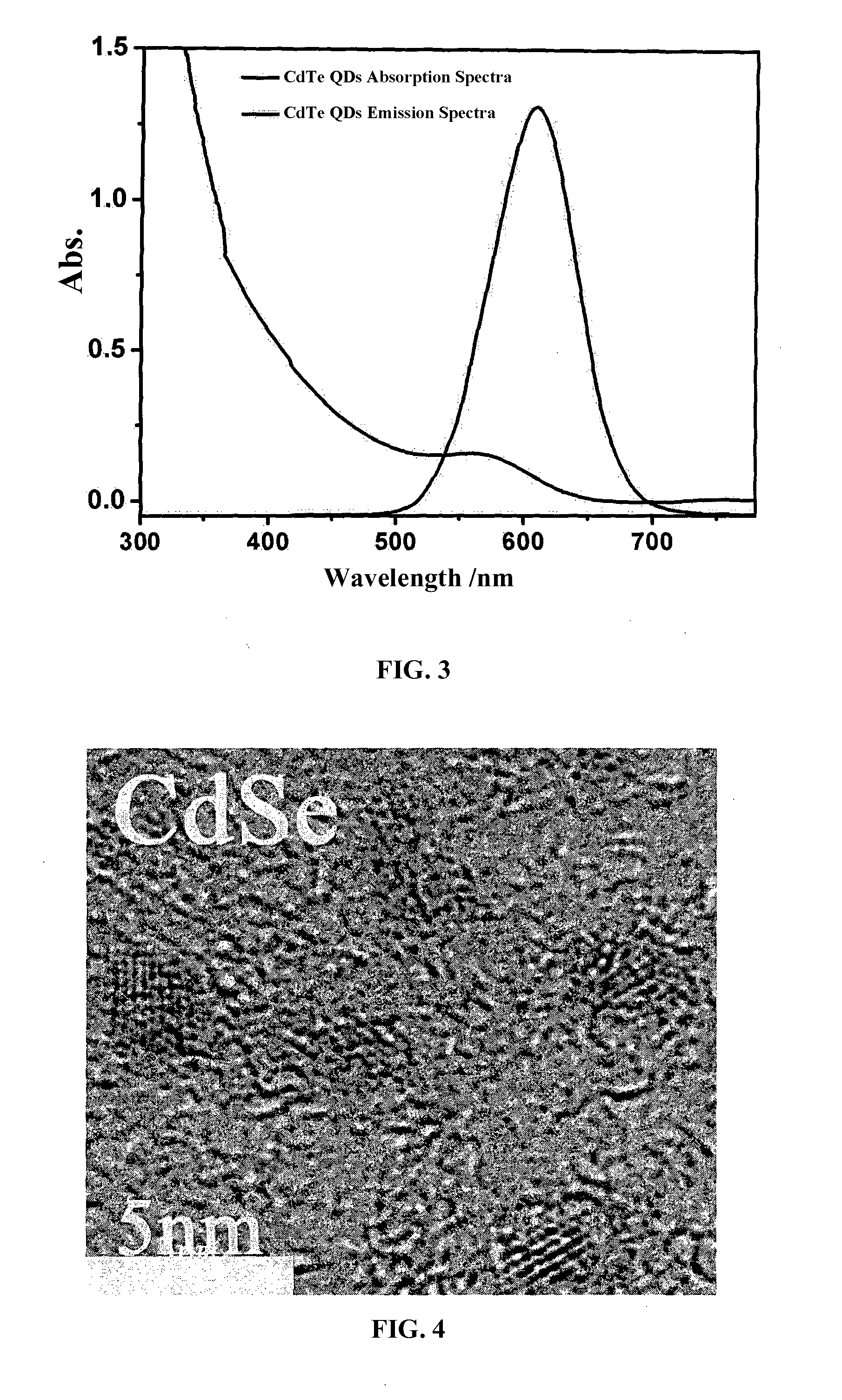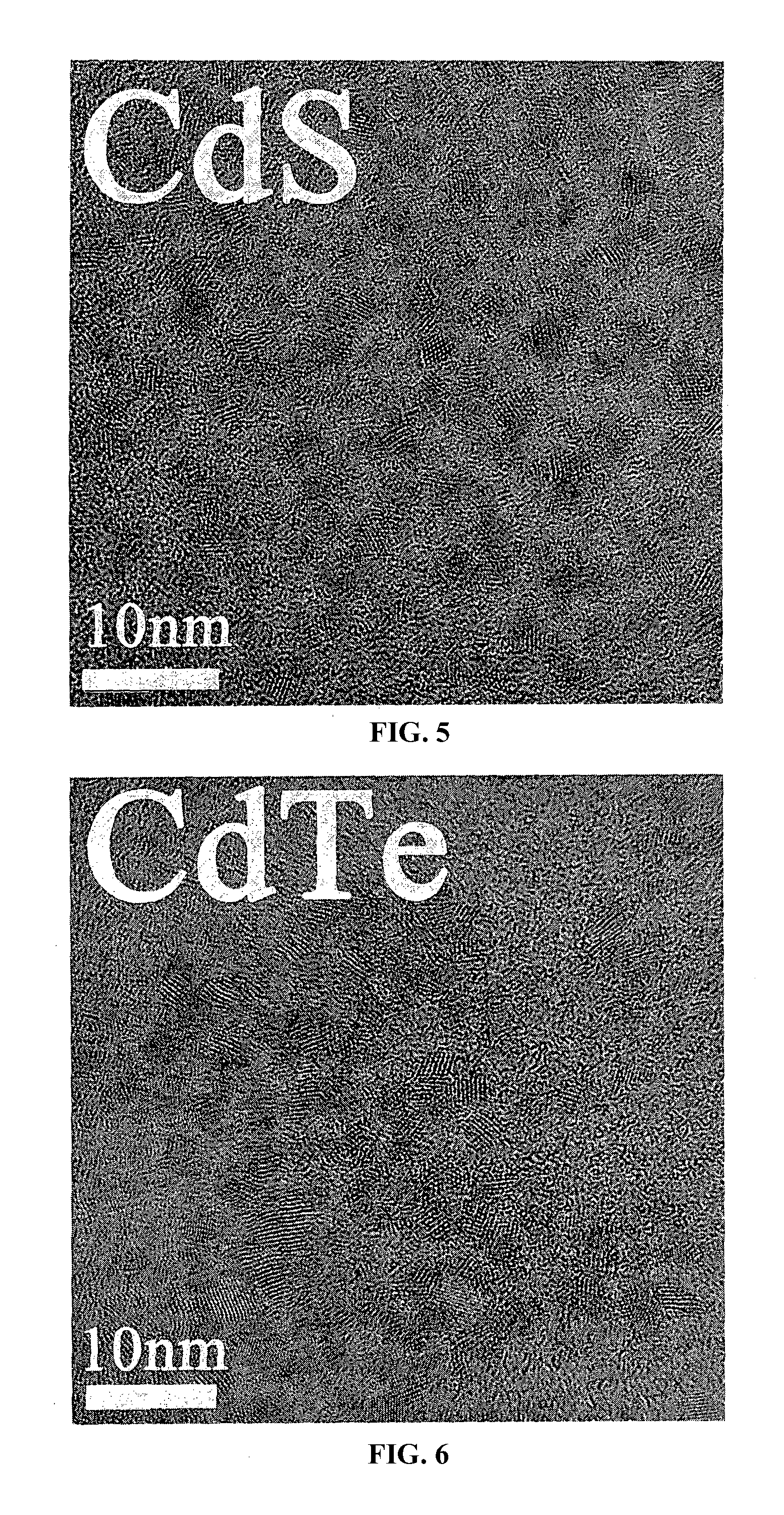Semiconductor photocatalyst for the photocatalytic reforming of biomass derivatives for hydrogen generation, and preparation and use thereof
- Summary
- Abstract
- Description
- Claims
- Application Information
AI Technical Summary
Benefits of technology
Problems solved by technology
Method used
Image
Examples
example 1
[0148]A method for photocatalytically reforming a biomass derivative using a semiconductor photocatalyst to generate hydrogen:
[0149]1×10−1 g / L of CdSe quantum dots (the concentration of CdSe stock solution: 2×10−1 g / L) was added into a Pyrex tube, followed by addition of 0.5 mL of CoCl2 aqueous solution (original concentration: 4.2×10−3 mol / L, containing 0.5 mg of CoCl2.6H2O) and 4 mL of methanol (original concentration: 24.75 mol / L at 20° C.). Then the pH was adjusted to 4, and the total volume was adjusted to 10 mL. The tube was sealed under nitrogen atmosphere and irradiated with a 500 W high pressure mercury lamp using a 400 nm long wave pass glass filter.
[0150]During the reaction, the generated hydrogen was detected with GC equipped with TCD (thermal conductivity detector).
[0151]After irradiation, synthesized in situ was a semiconductor material with a hollow sphere structure having an outer diameter of 10˜20 nm and a shell thickness of 2˜5 nm. The semiconductor photocatalyst h...
example 2
[0152]A method for photocatalytically reforming a biomass derivative using a semiconductor photocatalyst to generate hydrogen:
[0153]1×10−1 g / L of CdSe quantum dots (the concentration of CdSe stock solution: 2×10−1 g / L) was added into a Pyrex tube, followed by addition of 0.5 mL of CoCl2 aqueous solution (original concentration: 4.2×10−3 mol / L, containing 0.5 mg of CoCl2.6H2O) and 4 mL of ethanol (original concentration: 17.16 mol / L at 20° C.). Then the pH was adjusted to 5, and the total volume was adjusted to 10 mL. The tube was sealed under nitrogen atmosphere and irradiated with a 500 W high pressure mercury lamp using a 400 nm long wave pass glass filter.
[0154]FIG. 7 shows the HRTEM image of the photocatalyst prepared in example 2 deposited on ultra-thin carbon film after ultrasonically dispersed in ethanol. The HRTEM images of photocatalyst prepared in other examples of CdSe have similar morphologies and thus are not presented respectively.
[0155]As can be seen from the figure, ...
example 3
[0157]The method of example 1 was repeated except that the dopant is cobalt sulphate and the biomass derivative is ethanol.
PUM
| Property | Measurement | Unit |
|---|---|---|
| Fraction | aaaaa | aaaaa |
| Concentration | aaaaa | aaaaa |
| Fraction | aaaaa | aaaaa |
Abstract
Description
Claims
Application Information
 Login to View More
Login to View More - R&D
- Intellectual Property
- Life Sciences
- Materials
- Tech Scout
- Unparalleled Data Quality
- Higher Quality Content
- 60% Fewer Hallucinations
Browse by: Latest US Patents, China's latest patents, Technical Efficacy Thesaurus, Application Domain, Technology Topic, Popular Technical Reports.
© 2025 PatSnap. All rights reserved.Legal|Privacy policy|Modern Slavery Act Transparency Statement|Sitemap|About US| Contact US: help@patsnap.com



